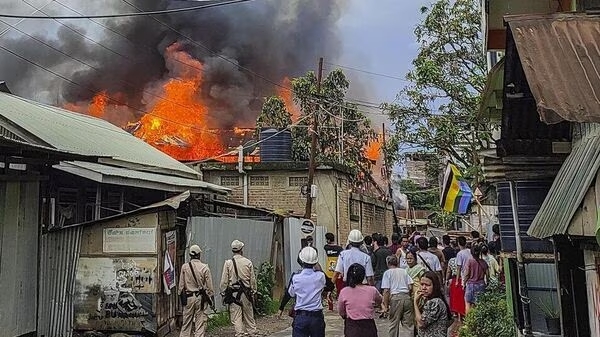The northeastern state of Manipur in India has been grappling with escalating tension for several decades. The region, known for its diverse ethnicities, cultural richness, and breathtaking landscapes, has also been marred by socio-political conflicts and developmental challenges. This article delves into the multifaceted reasons contributing to the rising tension in Manipur and seeks to shed light on the complexities of the situation.
Ethnic Diversity and Identity Politics
One of the key factors contributing to tension in Manipur is its remarkable ethnic diversity. The state is home to multiple ethnic groups, each with its distinct language, traditions, and cultural practices. This diversity, while enriching, has also given rise to identity politics, where various communities vie for recognition, representation, and socio-economic benefits. The struggle for political power and resources among different ethnic groups has led to tensions and occasional conflicts.

Insurgency and Militancy
Manipur has experienced longstanding insurgent movements seeking various demands, including greater autonomy, territorial claims, and cultural preservation. Several militant groups have operated in the region, leading to acts of violence, kidnappings, and bombings. The presence of these groups has created an atmosphere of fear and uncertainty, hindering development and disrupting everyday life for the local populace.
Land and Resource Disputes
Disputes over land and natural resources are another significant source of tension in Manipur. With a growing population and increasing demand for resources, conflicts arise between communities, the government, and private entities over land ownership, mining rights, and environmental conservation. These disputes often escalate, leading to protests and clashes that further strain the region’s social fabric.
Infrastructure and Economic Development
Despite being blessed with abundant natural resources, Manipur has faced challenges in infrastructural development and economic growth. Limited connectivity, inadequate healthcare facilities, and a lack of industrial investment have hindered progress and contributed to a sense of neglect among the population. The prevailing sense of economic disparity and underdevelopment has fueled frustration and discontent.
Interstate and International Relations
The geographic location of Manipur also plays a role in shaping its tensions. The state shares its borders with Myanmar and Nagaland, making it susceptible to cross-border issues and infiltration. Moreover, the state’s strategic location has attracted attention from various actors, affecting regional politics and creating geopolitical complexities that impact internal stability.
Government Policies and Governance
Perceived shortcomings in government policies and governance have been a point of contention in Manipur. Allegations of corruption, inadequate representation, and delays in addressing socio-economic challenges have fueled public discontent. The demand for better governance and more responsive policies remains a recurrent theme in the region’s political discourse.
The escalating tension in Manipur is a culmination of multiple complex factors that have evolved over the years. Ethnic diversity, insurgency, resource disputes, infrastructural challenges, interstate relations, and governance issues all contribute to the prevailing unrest in the region. Addressing these issues requires a comprehensive and sensitive approach that involves dialogue, inclusivity, and sustainable development strategies. Only through genuine efforts to bridge divides, promote social harmony, and ensure equitable growth can Manipur hope to find lasting solutions and pave the way for a peaceful and prosperous future.




